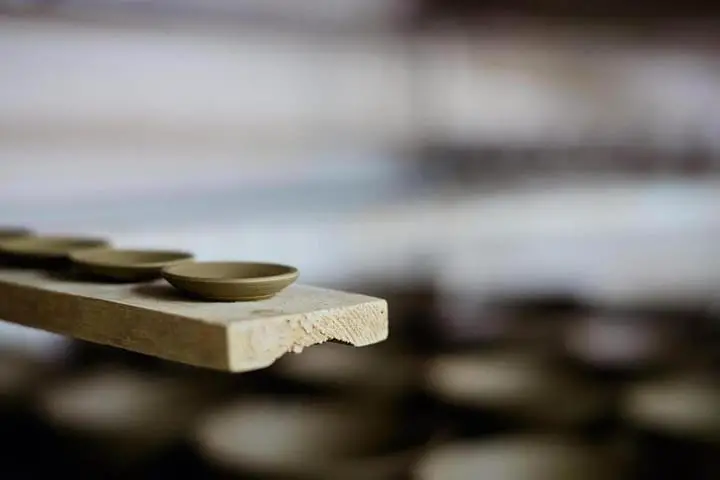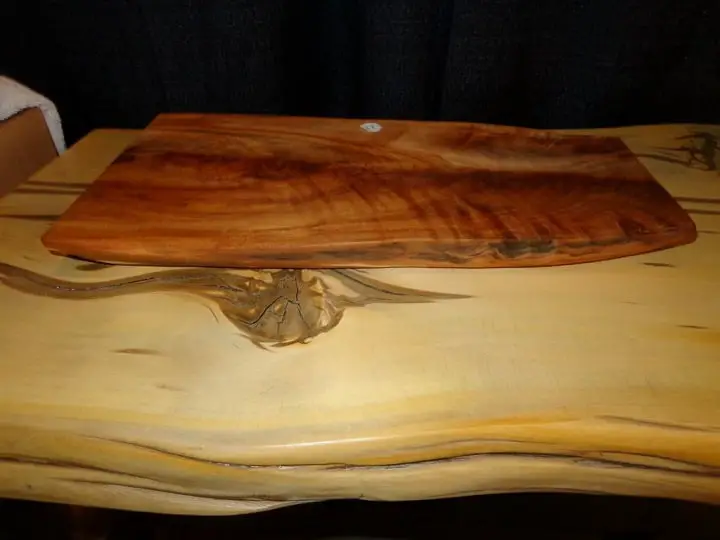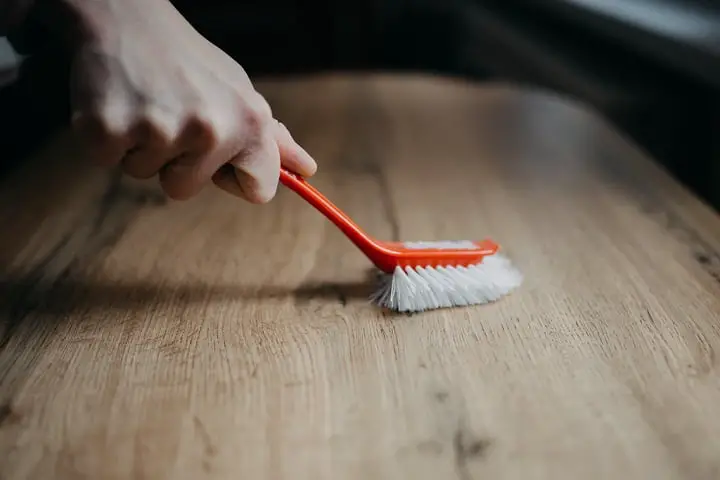Gluing ceramic into wood is a fairly common task for carpenters and professional builders to construct wooden stilt houses.
Yet, even if you are not a professional, you can make it easier than you think. All you need to do is choose a strong adhesive and complete the basic steps.
If you are still wondering how to glue ceramic to wood, the detailed instructions below are for you. Now let’s jump straight in!

Things You’ll Need
Before checking out the steps of gluing ceramic on wood, you need to prepare the following tools and materials:
Adhesive
- Mastic glue is an adhesive that works quite well on ceramic and plywood.
This glue dries quickly and is water resistant, making it suitable for use in areas with high humidity.
It doesn’t seem to withstand the harsh conditions of outdoor tiling.
- In addition to mastic glue, you can also prepare epoxy resin. This adhesive creates a strong surface bond.
Yet, it is quite brittle and cannot withstand tremendous pressure. It won’t be the best choice for your laminate flooring project.
- Silicone adhesive is a versatile adhesive choice that can bond between wood and ceramic.
It won’t be the ideal choice for long-term wet conditions. This material is also quite challenging to handle with newbies because of its fast curing.
- Polyurethane glue overcomes the above disadvantages quite well. It is weather-resistant, dries quickly, and has strong adhesive properties. However, it will not work well on ceramic.
Other accessories
You need to prepare enough gloves and masks and use them during work.
These protective items will avoid glue, grout, and dust affecting your skin and respiratory system.
You may also need wood and ceramic cleaning supplies like sandpaper, sponge, ruler, and brush.
How To Glue Ceramic To Wood? A Step-By-Step Guide
Gluing wood and ceramic won’t take too much of your time if you follow the steps.
Step 1: Determine the layout

Before proceeding to glue ceramic with wood, you need to determine the size and layout of each material.
Make sure they are highly compatible and uniform in size and aesthetics.
Use a ruler to grasp the dimensions of the material. You can take a pen and ruler to draw marking lines on the material’s surface to where you will glue ceramic.
Step 2: Surface treatment of the material

To create a strong bond, the two surfaces need to be flat. Cleaning the surface helps ceramic and wood stick together more tightly without microscopic gaps.
To process wood, you can resort to a circular saw. If your material has too many imperfections, you can also use a construction binder to fill them in.
Step 3: Use adhesive

Each adhesive has different usage requirements. Some types are available directly, while others require you to mix to create a sticky mixture.
Depending on the type, you will have separate mounting steps. Yet, you need to apply the adhesive on the wood surface, then place the ceramic on top to force them into place.
You should press lightly on the ceramic to fix them. If you are attaching more than one ceramic to the parquet, you should check the ceramic for evenness.
Better yet, use a rubber mallet that taps in rhythm with uneven positions.
Step 4: Wait for the glue to dry
Before continuing to process ceramic and wood, you need to wait for the glue to dry completely. Most strong adhesives today require at least 24 hours to cure.
Some bonds will require exposure to heat, while others will fix faster if you use a fan or adjust the temperature.
Step 5: Clean off excess adhesive
Once the wood and ceramic are fully bonded, it’s time to finish your bonding using sandpaper or a sponge.
For stubborn adhesives that are difficult to clean, gently rub the sandpaper to clean them. Meanwhile, soft sponges or cloths will effectively clean the dirt created during mounting.
If you find holes or cracks in the bond between the wood and the ceramic, use epoxy putty to fill it.
FAQs
Can you use wood glue on ceramics?
Adhesives that work well on wood will often also be able to stick to metal, stone, plastic, and especially ceramics.
What kind of glue should you use on ceramic?
Super Glue and epoxy are the best choices for bonding wood to ceramic. Super glue will create a strong bond in a short time. It only takes you a few seconds to get a solid link.
Epoxy adhesives also have an equally impressive bonding effect. Yet, it often requires you to mix the adhesive with additives to get the strongest adhesive.
How long does wood glue last?
Wood glue will last between 1 – 2 years. The few exceptions contain polyvinyl acetate or PVA glue stored under optimal conditions that last up to 10 years.
How secure is wood glue?
The robust wood glue models will withstand pressures from 3,600 to 4,000 pounds per square inch. Stronger adhesives such as epoxide or polyurethane are also more resistant to stress and have impressive durability.
Is wood glue water-resistant?
Most wood glue models are relatively waterproof. However, they will not retain the adhesion if exposed to moisture or water for a long time. Some special wood glues are entirely waterproof. However, their cost will also be a bit higher than average.
Conclusion
Hopefully, all the instructions and information in this article have been detailed enough to help you know how to glue ceramic to wood.
I hope that you will succeed in applying the instructions in the paper and completing your project as quickly as possible.
If you have any questions, don’t hesitate to leave a comment. We will answer all your questions about material bonding, especially between wood and ceramics.
Thank you for taking the time to read the post!
